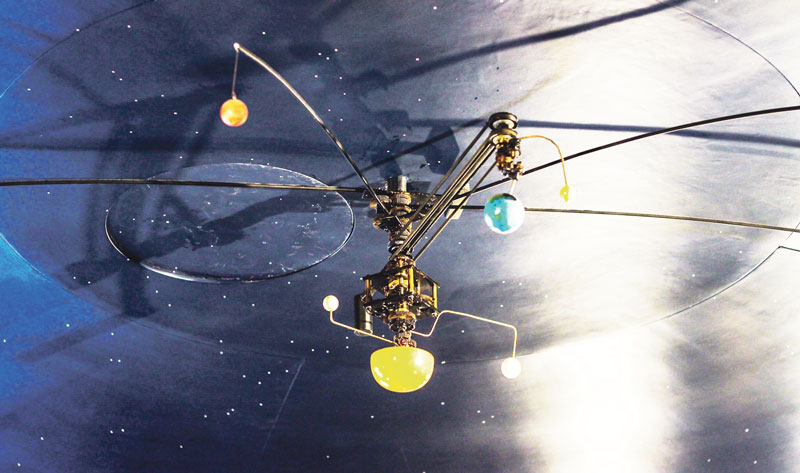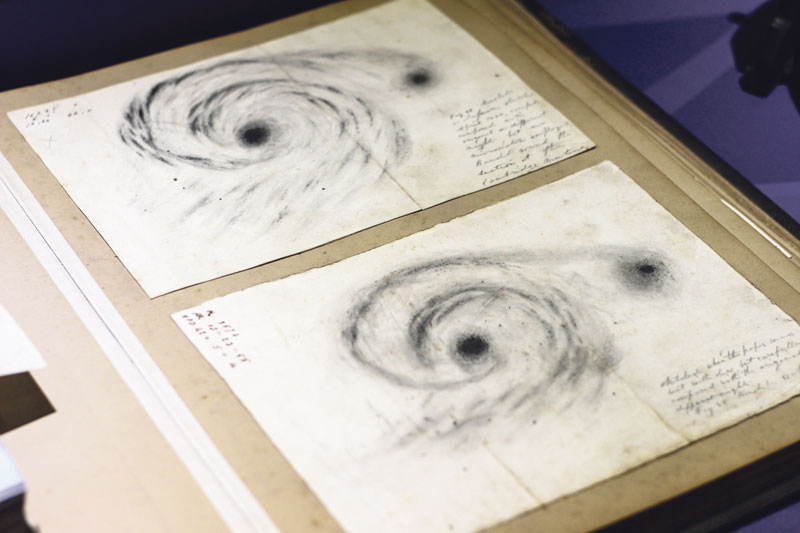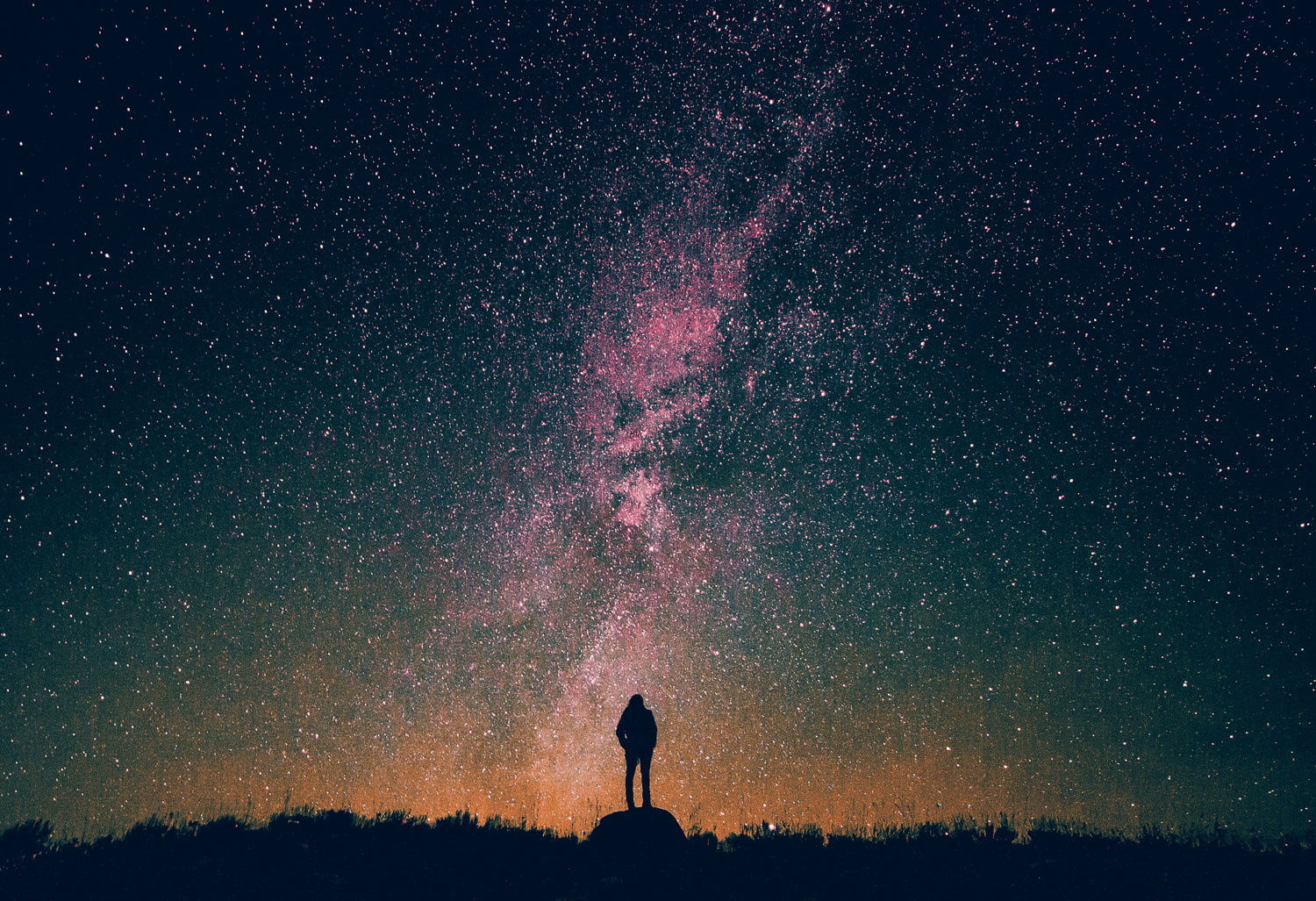Perhaps the clouds decided to break on a brisk night and peeled back to reveal the dim purple of the sky, or perhaps a few points of radiant light slowly gave way to a burgeoning sea glittering overhead. Maybe a young child by some odd chance looked up to see the heavens open as they staged a play billions of years in the making and perhaps that child did not do what so many of us are apt to do, which is to simply stare for a few moments and utter a few random words in an insincere awe. Instead, maybe they wondered why the sky did what it did, what was behind the shadowy veil, and perhaps the child let that question boil and burn inside just as hot as those flaring stars until they demanded to be answered. Perhaps that is how it begins: a starstruck kid with the will and the drive to satisfy a natural curiosity. If this kid was you, and you may want to revisit your childhood of stargazing, visiting Ireland to find the stars in your eyes, there could be many locations you may want consider looking into for your stays, Derry accommodation is one of many accommodations that you may wish to look into on your starry adventures.
A question is, after all, an itch of inquiry that demands to be scratched. The study of the stars and the vast worlds outside our own has been that itch for the majority of human history. The sky was an enigma that had no choice but to be answered in myths or stories, some of which have survived the passage of time. But while the sky served as the focus of consideration and inquiry, it also served another purpose, that of a literal compass for early explorers who had read beyond the signs on the surface and had developed an understanding of how the stars they knew could anchor them and give them some assurance as they set out in search of what they did not know. Therein lies one of the wonders of the stars: the sense that you know something about them balanced with the realisation that you might never know everything.
There are always questions, and where there are questions there are those who would endeavor to find the answers. Ireland has had its share of answer-seekers and stargazers, dating back to the Vikings who famously used their understanding of the stars and their motions to navigate on their expeditions across the seas. The 18th century saw the beginning of a period of scholarly activity resulting in the construction of a number of observatories across the country. One of those observatories, Birr Castle, also served as the home to the Third Earl of Rosse, William Parsons, known for his contributions to the study of astronomy in Ireland. For the better part of the 19th century and the early part of the 20th, the observatory was home to the world’s largest telescope, affectionately referred to as “The Leviathan”. Scholars the world over flocked to watch the skies from Parsons’s home, who built the telescope to satisfy his own interest in space.
This wonderful talent that we have in Ireland hasn’t come out of nowhere. It has always been here
Parsons made sure to educate his children in the sciences so that they could carry on the tradition of inquiry. His son Lawrence, the Fourth Earl, operating from the observatory with what would be considered primitive tools by today’s standards, measured the temperature of the moon. As difficult to believe as it might be now, it was even more difficult at the time of his announcement. He was written off by his contemporaries only to be vindicated later when Neil Armstrong landed on the moon, confirmed his findings and contacted the family to let them know.
While the tradition has been strong, support for it has not always been so. This was partly to do with a number of economic and political reasons, but Alicia Clements, a descendant of Parsons, cited the image of Ireland as another part of the problem. “Everyone likes to think of Ireland as really poor and not really contributing and that’s why you get a lot of great poets, because everything was so tragic. But everyone has written out the fact that there were huge scientific achievements and endeavors. This wonderful talent that we have in Ireland hasn’t come out of nowhere. It has always been here.”
Although the interest in and support for the study of astronomy within Ireland seemed to wane for a time, a recent surge can be attributed to an enduring inquisitiveness that has found a way to combine with the pool of talent Clements spoke of. Dr Michael Burton at the Armagh Observatory remarked that the young researchers are “self-motivated, fascinated by a problem but also prepared to ask questions and work things out for themselves”.
Lana Salmon, a PhD student in Astrophysics at University College Dublin (UCD), credited an innate inquisitiveness for putting her where she is now: “I realized that I loved building things and asking questions and figuring out how to do things. I thought that astro[physics] was one of those fields where there’s constantly questions being asked and I could always search for some kind of answer. And I just always knew I was fascinated by space.” Physics, she said, has given her a way to answer some of her questions, and is one valid way of approaching the answers to many others: “I think being able to explain why things are the way they are…I think that’s generally what physics is.”
Salmon admitted that it was not always easy for her to study astrophysics, noting that while in school she generally performed better in English, Spanish and the arts: “I was devastated when my results never really matched up to my interests. It was a constant struggle. During my undergrad I struggled hugely with maths.” She noted that a series of “little victories” helped to keep her on track. “It’s never going to be an easy path. Physics is about jumping over hurdles and finding out things that nobody else knows, so it’s never going to be very easy, but you can do it.”
For her colleague David Murphy, whose background was originally in architecture, the pursuit of astrophysics holds a slightly different meaning. Murphy, like Lana, credited a family visit to the Kennedy Space Center with pushing him onto this path. “We went to this huge hangar where they stored all of the parts of the International Space Station that they were building at the time. I was already sort of obsessed with the ISS because it was on the internet all the time, and you could watch the astronauts building it live. For someone who thought they wanted to be an architect, building stuff is really cool.”

There was a cooling-off period upon his return, but the experience stuck with him. “I came home, and just a few months later, it was constantly turning over in my head. I had to do something like that. And, from that point on, I don’t really know what happened.” Carried along as if on the tides, Murphy eventually found himself alongside other intrepid spirits like Salmon, building what promises to be Ireland’s first, but certainly not last, satellite. Murphy admitted that his interest lies in the technical aspect of astrophysics, such as the tools used in the study of space. He spoke about the Watcher Robotic Telescope, a telescope used to gamma ray burst afterglows operated by UCD, and how its operation, the way it measures the afterglows, is what piqued his interest. About the project his and Salmon’s team is currently working on, he commented: “Now we’re working on building Ireland’s first satellite, it’s a cube satellite, and it’s got a new type of gamma ray detector that has a lot of technology that’s never been in space before.” The idea of being the first to use this technology is what excites Murphy: “For me, it’s about building the things that answer the questions, and enabling other people to find answers.”
The project itself, supported by the European Space Agency (ESA), is an important step in re-establishing Ireland as a principal player in the fields of astronomy and astrophysics, as its main purpose is to teach the new generation of astrophysicists how to build satellites. “We don’t have a lot of capability in this country for this kind of thing”, said Murphy, adding that there is currently no legal framework in place to allow a satellite to launch from Ireland. In other words, it seems even the very idea of building and deploying a satellite ( for space travel and the study of space in general) has not been a chief concern for Ireland, nor was it even imagined.
“Designing, building, testing, operating, we learn all of that just by doing this”, commented Salmon. Lacking first-hand knowledge of the process and the legal preparation to engage in the type of experimentation and research that astronomy requires, it becomes clearer why the discipline has been held back for so long. But it appears that steps are finally being taken to match interest with opportunity and capability. “With the resurgence in the interest in astronomy in Ireland, I think this is kind of the natural next step. If you train a bunch of students to work on things like this, you naturally move Ireland forward.” The key is that this project is being completed by students and that they are building something that is usually saved for those well into their career. By getting a head start and learning the process so early, the hope is that the members of the team will carry the knowledge forward and help the community of Irish research catch up with their peers around the world. “I think the realisation is that we have to catch up now”, observed Murphy, “and there’s a lot of effort going into that”.
It’s about building the things that answer the questions, and enabling other people to find answers
Another opportunity has come in the form of Ireland’s membership in the European Southern Observatory, which was finalised this year. The observatory, based in Chile, provides access to what Burton identified as the clearest view of the sky (next to Antarctica), which will undoubtedly allow young Irish researchers to explore corners of the sky that other countries have already been able to see for years. Ireland does have some ground to make up, but it is moving forward, another “little victory.”
But how do we ensure that these opportunities and advancements do not go to waste? The sciences and other STEM subjects are being presented the world over as a set of disciplines that the world needs to invest more in, yet there is a preconception that the subjects are unapproachable, or at the very least, extremely difficult. Laura Hayes, a PhD candidate in Trinity, notes that at some point a discrepancy in the way school subjects are talked about develops: “They don’t say ‘I’m bad at English’ but they say it with maths and physics”, she noted, “and it’s an acceptable thing to say because we’ve made it that way. And with biology people don’t really say that, or with chemistry, but physics seems to be in a black box”. To be sure, the subjects do have their difficulties, but as Salmon mentioned, you have to be able to jump those hurdles. So what can be done to keep students trying to jump those hurdles? How do we encourage them to keep asking questions without worrying about whether they are smart enough to answer them?
“We need to be going to schools and showing them what we do”, said Murphy. He went on: “It’s not scary, and people should know that. I think if they saw what we were doing on a day-to-day basis, we’re not at a blackboard writing out equations. There’s an awful lot of looking at very nice pictures of the sky, which is fun, but that is also how you do some serious research.”
Salmon continued, saying, “I’ve done a couple of workshops with primary school kids, and the first thing I ask them to do is to draw what you think a physicist or a scientist looks like, and they always draw Einstein or someone wacky with glasses and a lab coat”. After some time explaining how diverse the field is and the types of people working in it, she usually notices a change in their preconceptions, she said. “At the end, I ask them to draw what a scientist looks like, and they rethink it.” Hayes mentioned having similar experiences when dealing with schoolchildren and their preconceived notions of what a scientist is.

Not killing the curiosity that exists naturally within young children, who are open to new ideas, adept at asking the types of questions that can spur serious research and have not yet been locked into one way of thinking, is equally important. Burton mentioned that the goal of the Armagh Observatory is to have every child visit the observatory and to instill in them an interest in science and astronomy. The sheer number of visitors (about 50,000 have visited this year) has given Burton a chance to hear a multitude of children’s questions: “Often they ask what sound like very simple questions, but are in fact actually quite revealing and possibly very deep. One doesn’t realise that very often it is the simplest questions that are the deepest questions.”
And then there is the magic of seeing something that had previously felt like a fairy tale. “Get them to look through a telescope”, said Murphy as he reminisced about the first time he saw Saturn. “When you think about it, that’s light coming from Saturn, bouncing off of a mirror and into your eye”. With this comes the understanding that these are not simply abstract concepts in a textbook, that these are places and things that actually exist, that are “physically accessible”. If you give the names a face, a body, make the arbitrary real, then it will no longer seem impossible to reach them. And for schoolchildren, this is where the real interest begins.
There’s an awful lot of looking at very nice pictures of the sky
What happens in space exhibits tangible effects here on Earth, which is precisely what Hayes is researching in solar physics and space weather. “The sun has these big eruptions of hot gas and radiation, and that can, for example, ionize our atmosphere, which can affect the GPS systems and high-frequency communications, and cause the Aurora [Borealis], which is particles of the sun hitting the Earth.” Due to advances in solar physics, catastrophes such as the 1859 Carrington event, which if it happened today would wreak untold havoc on the world’s telecommunications infrastructure and power grids, can be predicted and damage can be minimized. More than that, these advances bring the sun within reach and give it an appreciable and comprehensible significance.
But while reining in the sun could lead to more of Ireland’s youth exploring studies and careers in physics and astronomy, there will always be that lingering sense that while it may get closer, we will never be able to touch it, and that while we might continue to learn new things about the universe, it will never spill all of its secrets. And that’s fine, because what drives these researchers is not answers but the questions that remain and the wonder of it all. Salmon spoke of a moment she had one day not long ago: “I was walking home, and I saw the moon, and I was just looking at it. I saw the moon and the stars, and I was thinking how lucky I am to be able to study things like this.”
So perhaps all it takes is a dark cloudless night. One silent and unencumbered by cars and streetlights and all of the other things that fill our head with the noise that keeps us from wondering and questioning, a night where we really see the stars and know that they are “not just points of light” but so much more.







